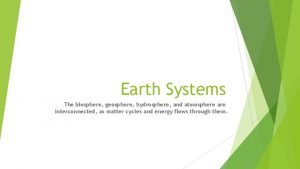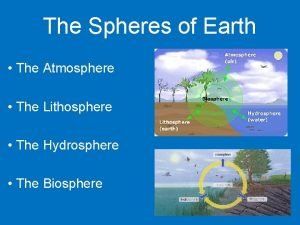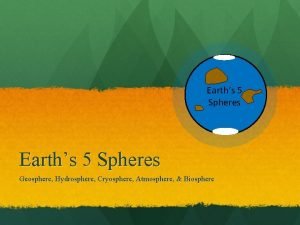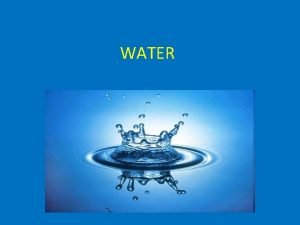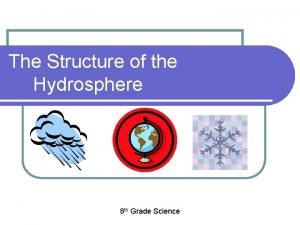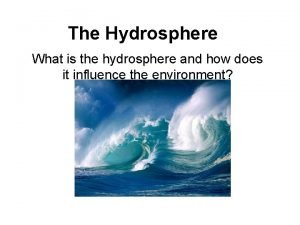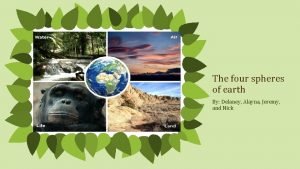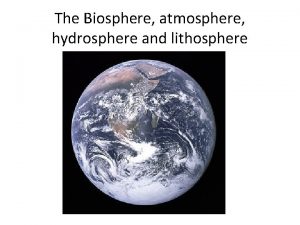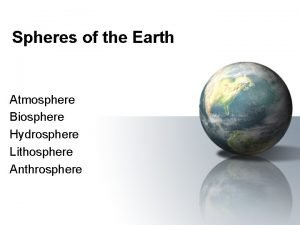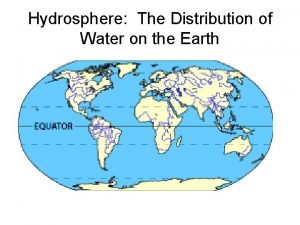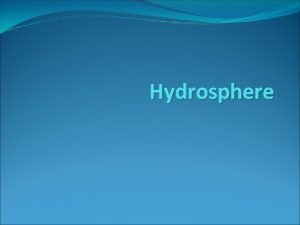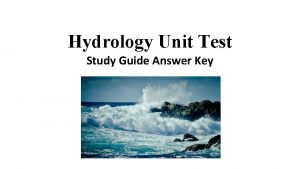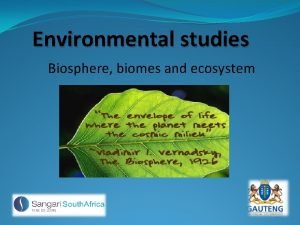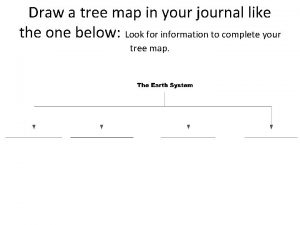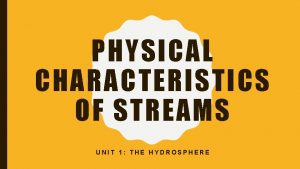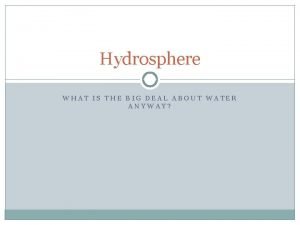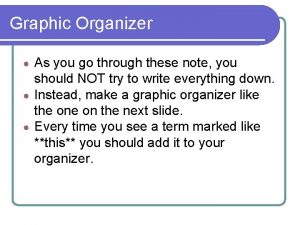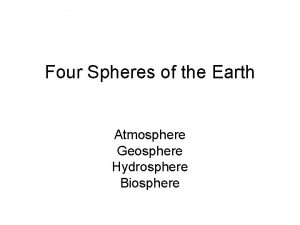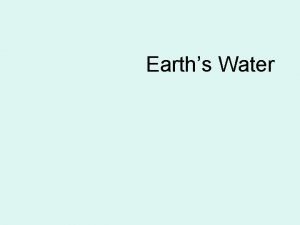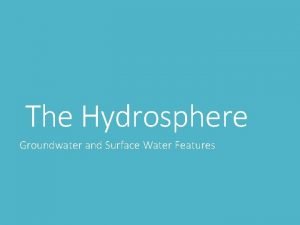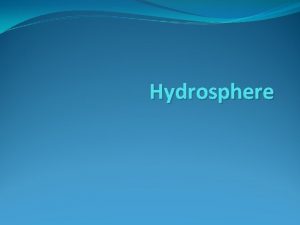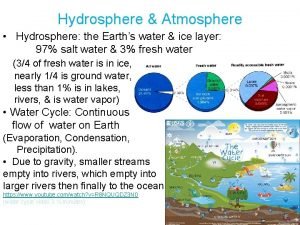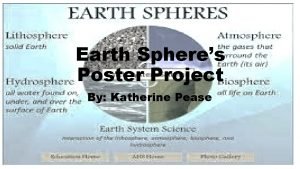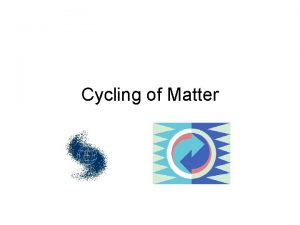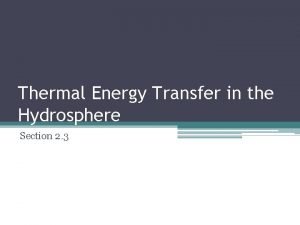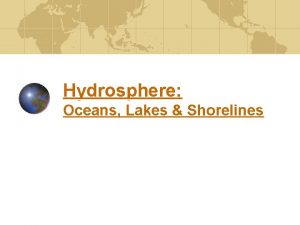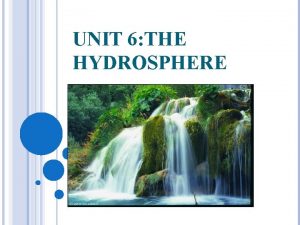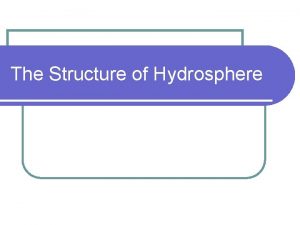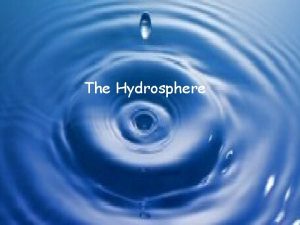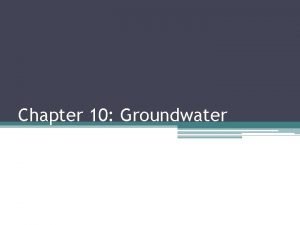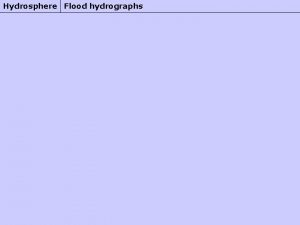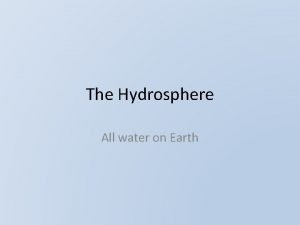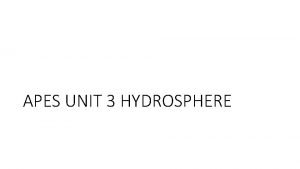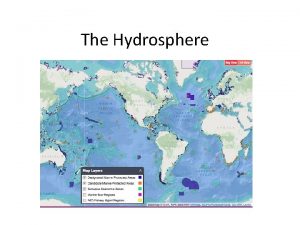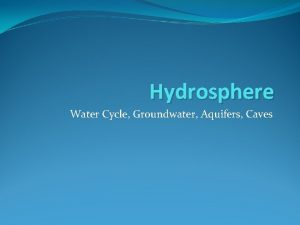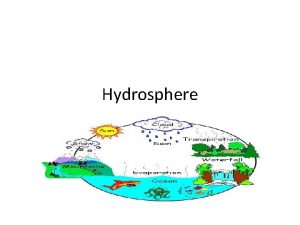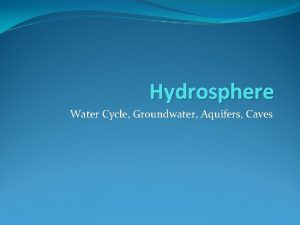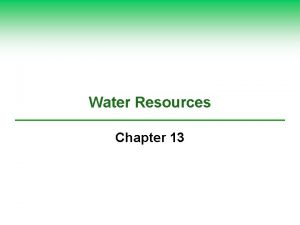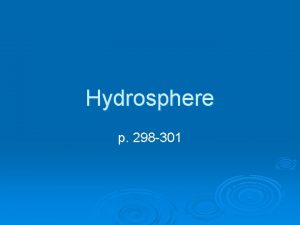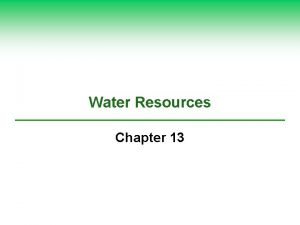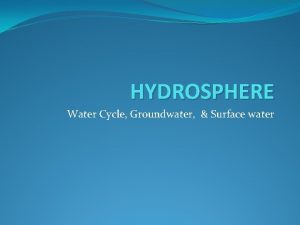The Hydrosphere What is the hydrosphere and how

























- Slides: 25

The Hydrosphere What is the hydrosphere and how does it influence the environment?

The Hydrosphere • The hydrosphere consists of the Earth’s water resources: oceans, lakes, rivers, streams, groundwater, and glaciers • 97. 5% of water on Earth is salt water • Only 2. 5% is freshwater! • Fig. 6. 26 on p. 201

ST EST AST ES

Inland Waters • Inland waters are all the freshwater resources found on the continents (lakes, rivers, groundwater) • A watershed is an area of land in which all inland waters drain into the same larger body of water (also called catchment area or drainage basin) • eg: St. Lawrence River watershed

What is a watershed?

Factors that affect how water flows within a watershed • Topography slope of the land; steep slopes drain easily and quickly • Geology type of rock; holes or gaps in rock vs. compact clay • Climate rainfall, winds and temperature • Vegetation highly vegetated areas can slow water flow • Development a dam can prevent water from flowing freely

The Oceans • Five major oceans – Pacific Ocean – Atlantic Ocean – Arctic Ocean – Indian Ocean – Southern Ocean (as of 2000) ** Two important factors when studying oceans are temperature and salinity

Ocean Temperature • Ocean temperature varies with depth, season and latitude

Depth • Sunlight warms the top layer of ocean water which is called the mixed layer • Below 200 m temperature drops quickly; this zone of rapid temperature change is called thermocline • Beneath thermocline at about 1000 m, water temperatures are uniformly cold at about 4 o. C

Ocean Temperature and Depth ST EST

Season • Oceans warm slightly in summer and cool slightly in winter. • The changes in temperature are less pronounced than on the land because water loses or gains heat much more slowly than land.

Latitude • Ocean waters are 25 o. C to 28 o. C at the equator and only 12 o. C to 17 o. C in the temperate zones. • They are colder still at extreme northern and southern latitudes (<10 o. C). ST EST

Ocean Salinity • Salts dissolved from the lithosphere create a salty ocean. These salts dissolve as rivers flow over the ground and empty into the ocean. • Salinity is a measure of the amount of salt dissolved in a liquid. • Ocean salinity is about 3. 4 to 3. 7%

Ocean Circulation • Water in the ocean is in constant motion. • An ocean current is the movement of seawater in a certain direction. • Ocean circulation is the combined effect of all currents that move in oceans.

Surface Currents • Wind driven ocean currents • Push the top 400 m of water

Subsurface Currents • Occur at depths of more than 800 m • Due to variations in density between layers of water • Cold water is more dense and tends to sink • High salinity water is also more dense and sinks below less saline water

Thermohaline Circulation • The combined effect of surface and subsurface currents is termed thermohaline circulation • Results in water being moved all around the globe • Accounts for major transfers of heat • Dramatically affects global weather patterns

Pollution and Degradation of Water Resources • Chemical pollution metals, mercury, PCB’s, mine drainage • Thermal pollution heat discharge from factories can decrease oxygen content and lead to fish kills • Oil spills 6 million tonnes per year • Plastics north Pacific Gyre an ocean “garbage dump”

Fish Kill EST SE

Oil Spills EST SE

North Pacific Trash Gyre EST SE

Eutrophication • Farming activities add excess fertilizers to rivers and lakes (mostly phosphorus and nitrogen). • These excess fertilizers can stimulate algae growth. • Excess algae growth can then lead to algae blooms, toxins being produced, reduced oxygen levels, fish kills and green scum forming on lakes. • This whole process is called eutrophication.

Eutrophication EST ES

Eutrophication experiment conducted by the University of Manitoba. Can you guess to which side of the lake fertilizer was added? EST ES

 Earth four spheres
Earth four spheres Earth systems
Earth systems Images of lithosphere hydrosphere atmosphere biosphere
Images of lithosphere hydrosphere atmosphere biosphere 5 spheres of the earth
5 spheres of the earth Tributary
Tributary The structure of the hydrosphere
The structure of the hydrosphere Hydrosphere images
Hydrosphere images Biosphere defintion
Biosphere defintion Lithosphere
Lithosphere How does biosphere interact with hydrosphere
How does biosphere interact with hydrosphere Hydrosphere water distribution
Hydrosphere water distribution The hydrosphere includes the
The hydrosphere includes the Hydrology unit study guide
Hydrology unit study guide There are types of biomes
There are types of biomes Geosphere drawing
Geosphere drawing Characteristics of hydrosphere
Characteristics of hydrosphere Whats hydrosphere
Whats hydrosphere Hydrosphere mind map
Hydrosphere mind map Carbon cycle
Carbon cycle Three ways to conserve water
Three ways to conserve water On the surface of water
On the surface of water The hydrosphere includes
The hydrosphere includes Hydrosphere layer
Hydrosphere layer Poster 4 spheres of the earth
Poster 4 spheres of the earth Hydrosphere pictures
Hydrosphere pictures Thermal energy transfer
Thermal energy transfer

